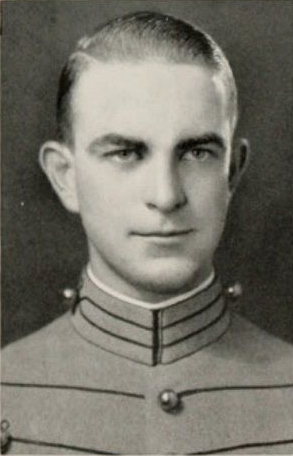Lawrence Chandler Baldwin was born on April 23, 1915, in Tokyo Metropolis, Japan. He was the son of Karl F. Baldwin and Philena Lawrence Chandler. He was married to Kathleen Kieslich. He completed high school in Leavenworth, Kansas, serving as a cadet captain in the ROTC, and earning the rank of Eagle Scout with two Palms. After attending Columbia Preparatory School and spending a year at the University of Maryland, he entered the U.S. Military Academy at West Point in 1934. At the Academy, Chandler maintained a strong academic standing, played lacrosse, and served as team manager in his senior year. In 1936, he was among six cadets chosen for a midshipmen’s European cruise, reflecting his promise as a future Army officer. Graduated in 1938, he was commissioned in the Coast Artillery and later was transferred to Corregidor, Philippines.
During the war, Lawrence served with the 1st Battalion, 60th Coast Artillery (Anti-Aircraft) as Battalion Adjutant, Operations Officer (S-3), and Gas Officer. After the fall of Corregidor on May 6, 1942, Chandler Baldwin was transferred from the island to Manila around May 24, landing at Pasay and marching to Old Bilibid Prison. After about a week, he was moved to Prisoner of War Camp No. 1 in Cabanatuan, north of Manila. In late October 1942, he was among roughly 1,800 prisoners who volunteered to return to Bilibid and were later sent to Davao, Mindanao, arriving on November 8. While imprisoned at Davao, Chandler Baldwin undertook the remarkable task of compiling a comprehensive history of the Philippine Campaign, based on interviews with hundreds of fellow prisoners. Working with Captain Frank O. Anders, he produced a manuscript spanning hundreds of pages with around 300 maps and illustrations, which was later praised by surviving officers as an exceptional historical record. When the Japanese discovered Anders’s copy during a surprise inspection at Bilibid Prison, Chandler managed to save his version by tossing it out a window, where fellow prisoners hid it. It was later buried at Cabanatuan and briefly recovered after the liberation of the Philippines in 1945, but the manuscript has since been lost, a major historical tragedy, as most contributors did not survive.
In late 1944, a Japanese transport ship carrying 1,600 American POWs was torpedoed by an American submarine, killing nearly everyone aboard, including many of Chandler Baldwin’s friends. Shortly afterward, Chandler’s group was moved from Cabanatuan to Bilibid Prison in Manila. On December 13, 1944, Chandler was among 1,620 prisoners loaded onto the Oryoku Maru, which was bombed and sunk in Subic Bay, killing about 300 men. The survivors endured starvation, disease, and extreme overcrowding as they were transferred onto two more ships bound for Formosa (Taiwan), where another 350 prisoners died in a bombing on January 9, 1945. The few remaining survivors eventually reached Moji, Japan, on January 30, 1945, with only 450 men alive, most gravely ill. Captain Chandler Baldwin, suffering from starvation and dysentery, died on February 4, 1945. Shortly before his death, Chandler traded his West Point ring for sulfa drugs to help the sick. After the war, the ring was returned to his wife by a British POW, who had received it from a Japanese woman in Fukuoka who had shown kindness to prisoners. His ashes are presently interred in the vault at U.S. Military Cemetery No. 2 in Manila.
Source of information: www.findagrave.com, alumni.westpointaog.org

PRIVATE CITIZENS SUPPORTING AMERICA'S HERITAGE
American
War Memorials Overseas, Inc.
War Memorials Overseas, Inc.
Baldwin Lawrence Chandler
Name:
Lawrence Chandler Baldwin
Rank:
Captain
Serial Number:
0-21171
Unit:
60th Coast Artillery Regiment
Date of Death:
1945-02-04
State:
Kansas
Cemetery:
U.S. Military Cemetery No. 2 in Manila, Philippines
Plot:
Row:
Grave:
Decoration:
Service Ribbons with three Bronze Stars, Distinguished Unit Badge with two Oak Leaf Clusters, Prisoner of War Medal
Comments:
